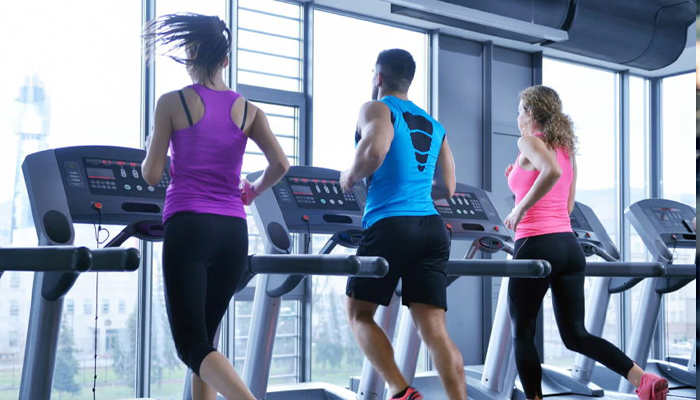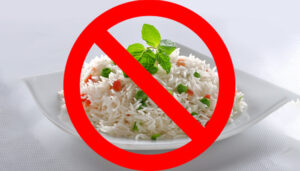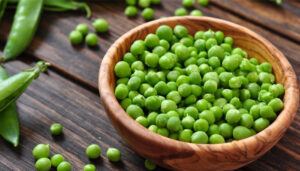BENEFITS OF CARDIO BEFORE WORKOUT



The benefits of cardio before a workout are many. Some of them are listed below.

Do you feel better on days when you don't work out? If so, it's likely because of the health benefits of cardio before working out. It is a proven fact that for many people, physical activity causes endorphins to be released in the brain. This is a natural hormone that creates feelings of well-being, happiness, and even euphoria. So if you are expecting to have productive days after exercising first thing in the morning, make sure to do some form of cardio before working out!
CONCENTRATION
In addition to positive moods from endorphins, another benefit is often an increase in energy levels. It's also beneficial to cardio before working out because it will make you feel so much better after a good night's sleep. In many cases, when people get enough sleep, they will then be able to concentrate on their workouts more effectively.

ENDORPHIN RELEASE: Cardio releases endorphins that create feelings of well-being and euphoria.
INCREASE IN ENERGY LEVELS: So many people report increased energy levels when they do cardio before working out

INCREASE IN SLEEP QUALITY: If you get enough sleep, you are likely to be more focused on your workouts the next day
Most people feel good when they do some form of cardio first thing in the morning because they will release endorphins which create a natural high. The other benefit is that it will really increase your energy levels and thus make you feel better overall.
Cardiovascular activity is one of the best ways to get your day off right, and it is something that really should not be taken lightly. Do you know that cardio before a workout requires a lot of discipline and it can get quite boring? But if you want to see results, you must be disciplined. The great thing about cardio before working out is that there are so many forms of it that you can choose from!


Sunil Dutt, the cool and charming Bollywood hero, surprised everyone by becoming a baddie on the big screen! He wasn’t just the romantic hero; he aced the role of a villain, playing a dacoit (bad guy) in a whopping 20 movies during his awesome career.
Remember “Mother India” in 1957? That’s where it all began. Dutt took on the challenge of playing Birju, a rebellious son, proving he’s not your typical goody-two-shoes hero. But wait, there’s more! He didn’t stop there; he ventured into the dacoit genre, bringing a whole new vibe to those bad guy roles.

Movies like “Gauri,” “Mujhe Jeene Do,” and “Mera Saaya” showcased his bad-boy skills. But here’s the twist – Dutt didn’t play your regular one-dimensional villain. Nope, he added layers to these characters, making you feel for them and think about right and wrong.
One of his top-notch performances as a bad guy was in “Pran Jaye Par Vachan Na Jaye” in 1974. He played a tough dacoit with shades of gray, making us question who the real good guys are.
Sunil Dutt didn’t just act; he changed the game in Bollywood. Back in the day, actors were stuck in one type of role, but not Dutt. He broke free from the hero stereotype, showing future actors that it’s cool to experiment with different characters.
Let’s celebrate Sunil Dutt’s legacy! He wasn’t just the smooth hero, not just the romantic lead. He was the guy who embraced the dark side, proving that real greatness lies in exploring all sides of life, even the shadowy bits people avoid. Sunil Dutt wasn’t just a Bollywood hero; he was a master storyteller, adding cool layers to Indian cinema with every role he rocked.
Recommended Articles


The records of Bollywood history are filled with tales of passion, controversy, and tragedy. Among the legendary figures, the life of Bollywood actress Meena Kumari stands out, and woven into her narrative is the equally compelling story of her then-husband, director Kamal Amrohi.

Marriage and Controversies: Meena Kumari and Kamal Amrohi exchanged vows on February 14, 1952, in a union that would become as notorious as it was iconic. Intriguingly, Kamal was already married, with children from his first marriage. The initial years of their marriage were engulfed in whispers of turmoil, with reports surfacing about Meena Kumari grappling with an invasion of privacy both in her personal and professional life.
adsplacement
The Pakeezah Conundrum: The pinnacle of their union was Kamal Amrohi’s ambitious project, “Pakeezah,” a film envisioned for Meena Kumari. However, the trajectory of this cinematic masterpiece was far from smooth. The film took a staggering 15 years to complete, mirroring the tumultuous relationship of its lead actors. This prolonged period saw Meena Kumari drowning in alcoholism and reportedly engaging in a brief affair with a leading actor.
Amid the strife, the couple parted ways in 1964 after enduring 12 years of a toxic marriage. Following the divorce, Meena Kumari’s health took a toll, diagnosed with liver cirrhosis. While receiving treatment in London and Switzerland, she defied medical advice and returned to India, resuming the shooting of “Pakeezah.”
adsplacement
The Price of Success: “Pakeezah” eventually released on February 4, 1972, marking a cinematic triumph for Kamal Amrohi. However, the joy was tinged with sorrow. Meena Kumari, the enigmatic actress who poured her heart and soul into the film, was inching toward her untimely death. The film’s success, hailed as Kamal Amrohi’s crowning achievement, overshadowed the personal cost exacted during its creation.
On March 31, 1972, Meena Kumari breathed her last breath, leaving behind a legacy of unparalleled artistry and tragic love.
adsplacement
Legacy and Reflection: The legacy of “Pakeezah” endures as a testament to Kamal Amrohi’s visionary directorial skills. While the film garnered nationwide accolades, it came at the profound cost of losing Meena Kumari. Kamal had won the praise of audiences and critics alike, but he had also lost his wife and an extraordinary actress.
In the trivia of Bollywood’s golden era, the love saga of Meena Kumari and Kamal Amrohi stands as a poignant chapter—a tale of passion, controversy, and ultimately, the heavy price paid for artistic brilliance.
Recommended Articles


Ever wonder about the jaw-dropping costs behind the glitz and glamour of Bollywood? Well, here’s a nugget of movie trivia that might leave you wide-eyed. In the realm of film finances, Director Madhur Bhandarkar once found himself in a peculiar situation – the budget allocated for Kareena Kapoor’s wardrobe in the movie “Heroine” exceeded the entire budget he had set aside for his debut film, “Chandni Bar.”

Once in a candid revelation to a leading daily, Madhur spilled the beans on the staggering expenses involved in crafting the perfect look for Kareena Kapoor in “Heroine.” He cheekily recounted telling Kareena that the cost of her wardrobe in the film surpassed the entire budget he had at his disposal for his first venture, “Chandni Bar.”
Recalling the challenging journey of his debut film, Madhur shared, “My first film did not work, so there was a lot of pressure on me, but I was hell-bent on making the film the way I wanted to. I made the movie on a very small budget.” This small budget, as it turns out, was notably smaller than what Madhur humorously spent on Kareena’s wardrobe in “Heroine.”
Back in 2012, Madhur Bhandarkar even took to Twitter to playfully highlight the stark contrast, stating, “I made Chandni Bar in 2001 with 1.5 crores which today, a decade later, is #Heroine’s costume budget for Kareena! How times have changed!” The revelation not only sheds light on the evolving dynamics of film budgets but also adds a touch of glamour to the behind-the-scenes intricacies of Bollywood.
As we reminisce about the extravagant looks that Kareena Kapoor adorned in the intense drama “Heroine,” it’s fascinating to note how the cost of her wardrobe surpassed the entire financial canvas of Madhur Bhandarkar’s maiden film. Talk about the dazzling price tags that come with the glitzy world of cinema! Interestingly, despite the sartorial splendor, “Heroine” fizzled out at the Box Office upon its release.


In the film industry, every star goes through a dark period. Aamir Khan is no exception. Aamir Khan is without a doubt one of Bollywood's biggest stars, and he has been producing successes after smashes since his debut. He is regarded as one of the most 'Perfectionists' in the film industry.
Did you know that the superstar, who is famed for producing movie office blockbusters, was previously dubbed "One Film Wonder" by the press? Aamir has opened out about his failures before achieving stardom.

Following Qayamat Se Qayamat Tak, he remarked, "I signed approximately eight or nine films based on stories because the directors were all fresh and unknown at the time." As a result of these films' success, I was dubbed a "one-film wonder" by the media. My career was on the decline. I felt as though I were stuck in quicksand. I was in a bad mood. "I used to cry when I got home," Aamir explained.
The actor went on to say that the individuals he wanted to work with were not interested in signing him, and that the films he was making were not financially successful.
After going through a particularly trying period, he told himself that he would not sign any film unless he was completely convinced.

"I went through my weakest period in my life throughout the first two years of QSQT. One by one, the films I had signed began to be released and flopped. So, knowing how horrible my other unpublished films were, I was like, 'I'm done, there's no way I can survive this onslaught.' "Aamir added. He went on to say that he was ready to call it a day on his film career, but that he was still determined to work with outstanding directors, screenplays, and producers. And this is what we call "perfect resolve," which Aamir demonstrated throughout a difficult period and helped him establish himself in the profession.
Everyone who is a fan of his performance is looking forward to his upcoming film, 'Lal Singh Chaddha.' Kareena Kapoor Khan also appears in the film. The movie is a Hindi remake of the classic Hollywood movie 'Forest Gump.'







